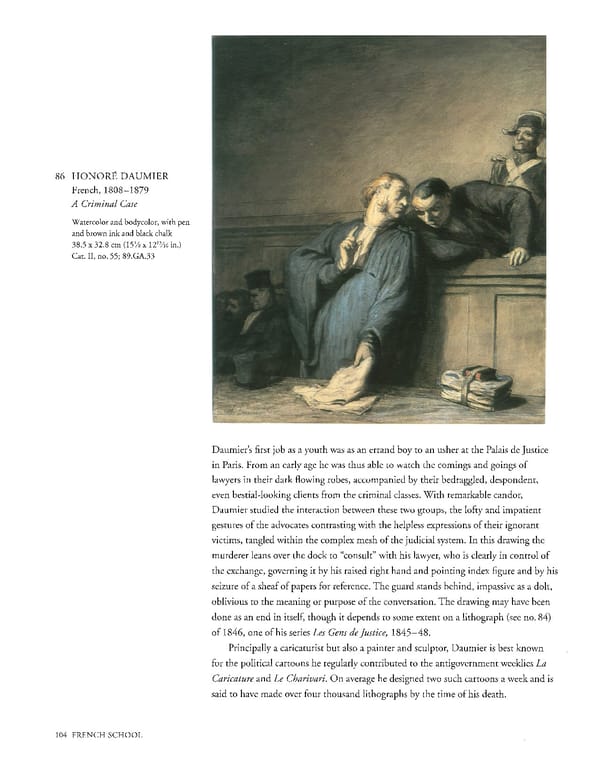86 HONORE DAUMIER French, 18081879 A Criminal Case Watercolor and bodycolor, with pen and brown ink and black chalk 38.5 x 32.8 cm (15 x 12 13/16 in.) Cat. II, no. 55; 89.GA.33 Daumier's first job as a youth was as an errand boy to an usher at the Palais de Justice in Paris. From an early age he was thus able to watch the comings and goings of lawyers in their dark flowing robes, accompanied by their bedraggled, despondent, even bestiallooking clients from the criminal classes. With remarkable candor, Daumier studied the interaction between these two groups, the lofty and impatient gestures of the advocates contrasting with the helpless expressions of their ignorant victims, tangled within the complex mesh of the judicial system. In this drawing the murderer leans over the dock to "consult" with his lawyer, who is clearly in control of the exchange, governing it by his raised right hand and pointing index figure and by his seizure of a sheaf of papers for reference. The guard stands behind, impassive as a dolt, oblivious to the meaning or purpose of the conversation. The drawing may have been done as an end in itself, though it depends to some extent on a lithograph (see no. 84) of 1846, one of his series Les Gens de Justice, 184548. Principally a caricaturist but also a painter and sculptor, Daumier is best known for the political cartoons he regularly contributed to the antigovernment weeklies La Caricature and Le Charivari. On average he designed two such cartoons a week and is said to have made over four thousand lithographs by the time of his death. 104 FRENCH SCHOOL
 Masterpieces of the Getty Museum: Drawings Page 104 Page 106
Masterpieces of the Getty Museum: Drawings Page 104 Page 106